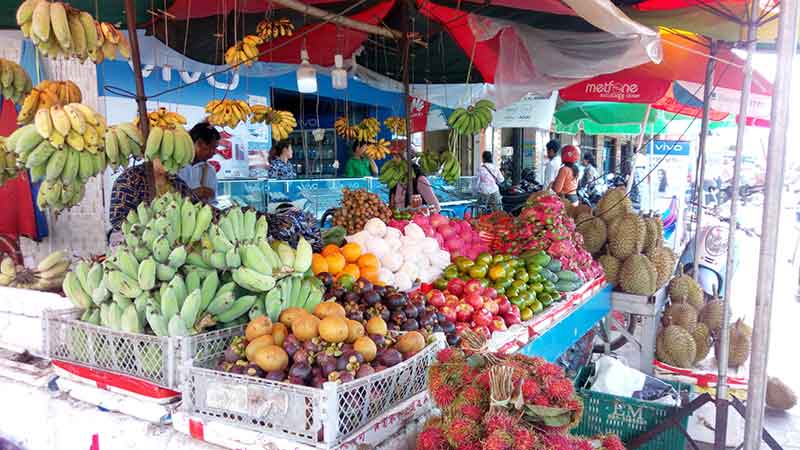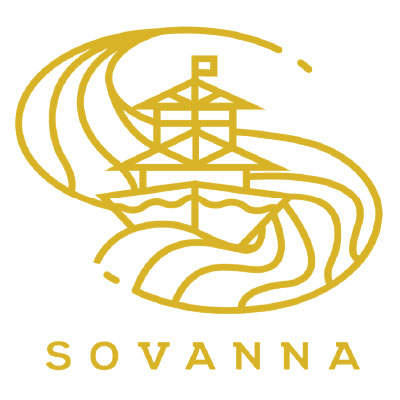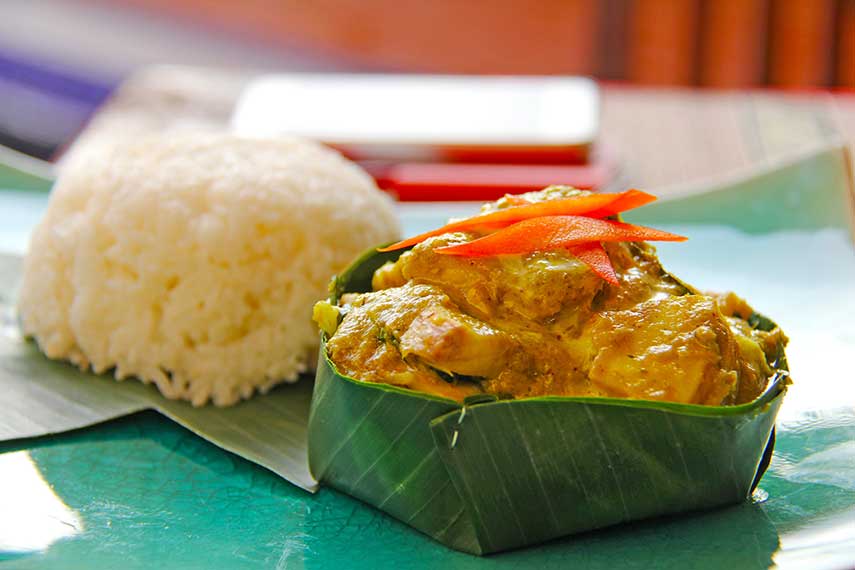A traditional Cambodian greeting is “Nyam bai howie nov?” (“Have you eaten rice yet?”)
Cambodian Cuisine is found in all of the lively food markets and from vocal street vendors. Many who are on the move continuously. Weaving through traffic pushing woks on wheels, mobile grills on the sides of motorbikes, bicycles with baskets brimming with mangoes.
Part of your Cambodian odyssey will involve experimenting with unfamiliar cuisine. Cambodian cuisine is not as well-known as that of its neighbours -Thailand and Vietnam. Most people assume it will be as spicy as Thai food. Instead, it’s quite mild. But, it’s not short of flavour. It’s all about contrast. Fresh and cooked. Bitter and Sweet. Tangy and Salty. Many influences are evident. There are soups similar to Vietnamese recipes. Crunchy salads are akin to Thai versions. Curries with Indian vibes. Noodle dishes spawned from Chinese migration. Years spent as a French colony result in a national love of coffee and baguettes.
Aromatic and creamy, ‘Amok’ is considered the signature dish of Cambodian cuisine.
The traditional way of preparing a curry with coconut cream, fish sauce, eggs, palm sugar and diced fillets of Mekong fish. Add to that a paste made of kaffir lime, turmeric, shallots and lemongrass– then steam it in banana leaves. The whole parcel is served onto the plate in a delicious vibrant green package.

Morning in Cambodian cities will bring streets packed with locals perching on plastic chairs. Odds are they’re having a popular traditional breakfast which carries a bit more oomph than tea and toast. Bai Sach Chrouk. This consists of a steaming sweet starchy rice bowl with grilled, thinly sliced pork on top. Throw in some sour pickles and hot chilli paste and you’re good to go. A sure-fire hit of protein and carbohydrates. Not to be outdone in the breakfast stakes, is Nom Banh Chok. This is the one for you if you’re looking for something with a zing. Fish curry with rice noodles and lots of greens and beans freshly sourced on the day, combine to make a fresh tangy dish.
Rather like Marmite, Prahok is the Cambodian Cuisine equivalent. It’s either love or hate. Fermented and crushed fish paste, it’s used as a seasoning mainly, but also served on its own with salad and rice. The flavour is very strong and salty, earning it the tag of Cambodian cheese.
City streets are filled with the smell of barbequed pork or beef from the many grills that spring up on every street corner. The scent of burning wood emanates from hardwood charcoal that smoulders throughout the day. Sach Ko Chomkak is skewered meat served up either in a baguette or with a papaya salad.
Now if some of that seems a bit tame for you, what else is on offer? Not for the faint-hearted or squeamish, tarantulas fried up and accompanied with a tangy pepper and lime dip are yours for the asking. Crispy outside, with a warm gooey centre of intestinal juice they are considered a delicacy. Tarantulas are hand caught in the jungle in a place called Skuon – located between Phnom Penh and Siem Reap. Anyone for the grilled frog on a stick? Skewered and deep fried Scorpion? Be brave!
So if all this is whetting your appetite, join us on board Sovanna and our chef will create a blend of Asian and western cuisine to tempt your tastebuds. Tarantulas are optional.
Follow us on Facebook | See more on YouTube
Read our blog post “The Rainy season, and why it is still ok to visit Cambodia


